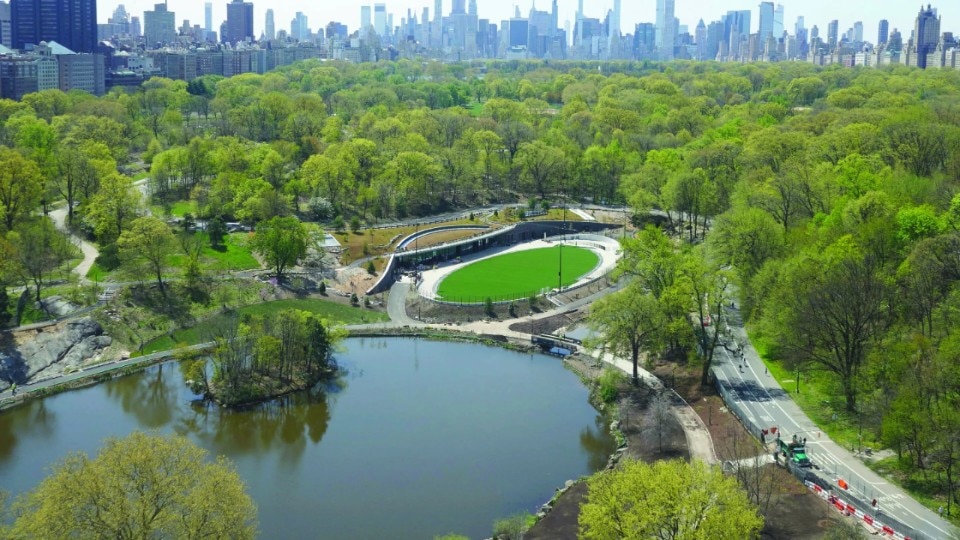For more than a century and a half, Central Park has been the changing mirror of New York City-a symbolic place that is being transformed once again today. The opening of the new Davis Center, a multipurpose pavilion with a swimming pool and skating rink, marks the park’s biggest transformation in decades.
At the park’s northern edge, where Central Park meets Harlem, six completely redesigned acres restore dignity to a long-neglected area. This is where Lasker Rink once stood, a groundbreaking facility in the 1960s but later degraded, an emblem of forced urbanization that stifled the original vision of Frederick Law Olmsted and Calvert Vaux.
The Davis Center project, is the result of years of public consultation, participatory planning and a $160 million investment, funded partly by the city and partly by private donations.
The new pavilion is unobtrusive, almost hidden in the landscape. Its materials - gray granite, green ceramics, steel and glass - dialogue with its context. Glass doors open onto the pool deck, creating a continuous space between indoors and out, while a grassy green roof allows panoramic views from above. In summer, it is a pool capable of accommodating a thousand swimmers; in winter, a skating rink; in the mid-seasons, an artificial turf sports field.
It’s not just about architecture. The Davis Center reintegrates water back into the landscape, reopening the flow of the Loch stream, which now flows again under the Huddlestone arch, as originally intended. A new wooden walkway floats over the lake, while paths connect seamlessly to the rest of the park.
For the Harlem community, it is the end of a long exclusion. For Central Park, a return to its public and shared essence. And for New York, a chance to rewrite its urban memory with sensitivity, listening and beauty.
Opening image: Courtesy Central Park Conservancy


